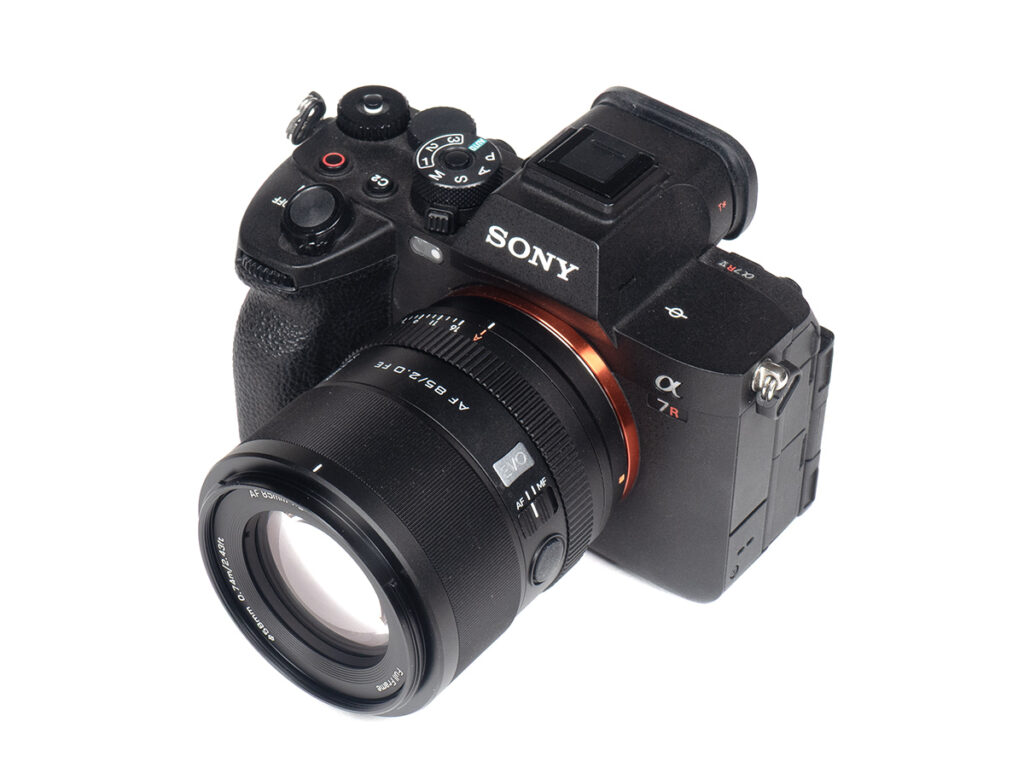Viltrox loves prime lenses. So much so that they had 3 different lineups for different user groups: low-budget “AIR,” high-quality “PRO” and at the top-end “LAB” lenses. Apparently, that wasn’t enough. 🙂 They have now released their first EVO lens – the Viltrox AF 85mm f/2 FE EVO to be precise. The EVO lineup sits between the “AIRs” and “PROs”. The lens remains very competitively priced at just 275 USD / 315 EUR / 265 GBP / 399 CAD / 45,400 JPY.
Mechanically, there isn’t much of a difference compared to PRO lenses, but at least this first EVO lens settles on a more moderate speed of f/2 compared to the 85mm f/1.4 PRO. While some may frown upon moderately fast prime lenses, there are a couple of benefits. The most obvious one is size and weight. As a rule of thumb, you double the weight and size (volume) with each extra stop. The 85mm f/2 EVO is almost tiny compared to an 85mm f/1.4 lens. The other less obvious benefit is optical quality – potentially at least. Once you move past f/2 towards even faster speeds, the optical design problems rise exponentially. Or in other words – it requires much less effort to design a great quality 85mm f/1.8 or f/2 compared to an 85mm f/1.4. We’ll have to see whether this also holds true here.
The build quality is impressively high. Unlike the AIR lineup, the lens body is made of metal, including the very smooth focus ring and the de-clickable aperture ring. It also features a (rather noisy) customizable Fn button. There’s also an AF/MF switch on the lens. In terms of weather-sealing, there’s just a mount gasket. A barrel-shaped lens hood is part of the package.
The 85mm f/2 uses an STM motor for focusing. While this isn’t the latest and greatest motor type, it works fine with respect to both speed and quietness. It’s not a sports lens, though.
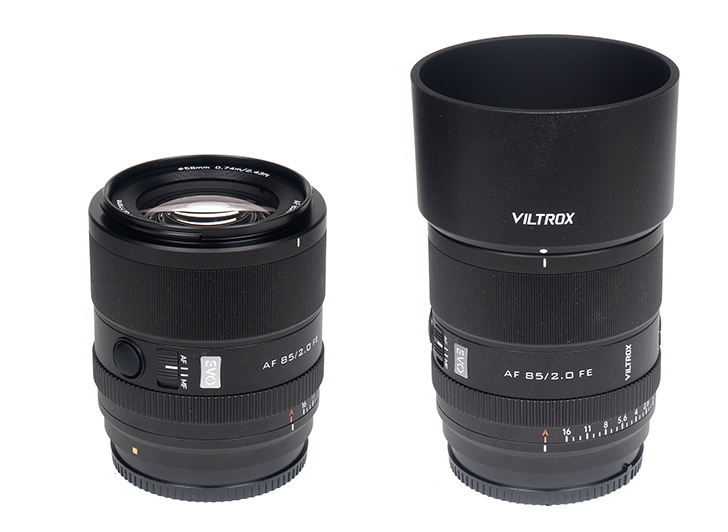
| Specifications | |
|---|---|
| Optical construction | 10 elements in 8 groups (2x ED, 2x HR) |
| Number of aperture blades | 9 |
| min. focus distance | 0.74m (max magnification: 0.13x) |
| Dimensions | φ69 × 76mm |
| Weight | 340g |
| Filter size | φ58mm |
| Hood | barrel-shaped (bayonet mount, supplied) |
| Other features | Aperture ring (de-clickable) Fn custom button Firmware updates via USB-C/Bluetooth Mount gasket |
Distortions
The lens produces a native image distortion of ~0.7% pincushion-style. This is quite low and usually not an issue. On the downside, you’ll have to live with this because the 85mm f/2 EVO does not have a built-in correction profile. Viltrox argues that the profile will be available via supplied profiles in RAW converters such as Photoshop. For most users, that’s probably fair enough.
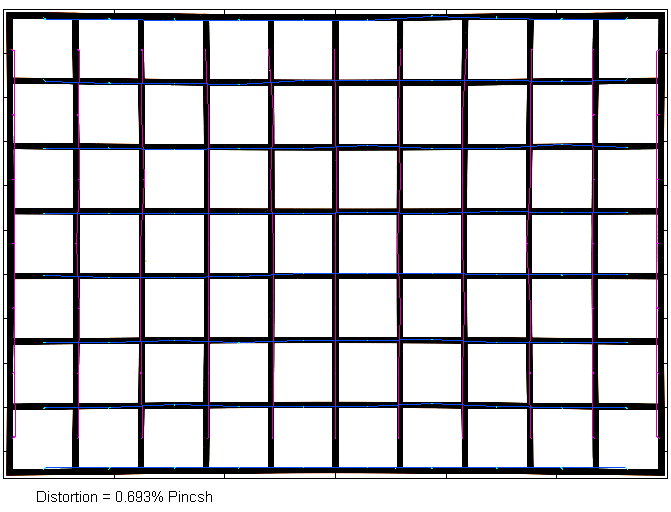
Vignetting
The vignetting characteristic is typical for a lens in this class. At f/2, there’s a very noticeable light falloff of more than 2 EV (f-stops). This has eased substantially at f/2.8, and the issue is mostly gone at medium aperture settings. Once again, there’s no built-in correction profile available here.
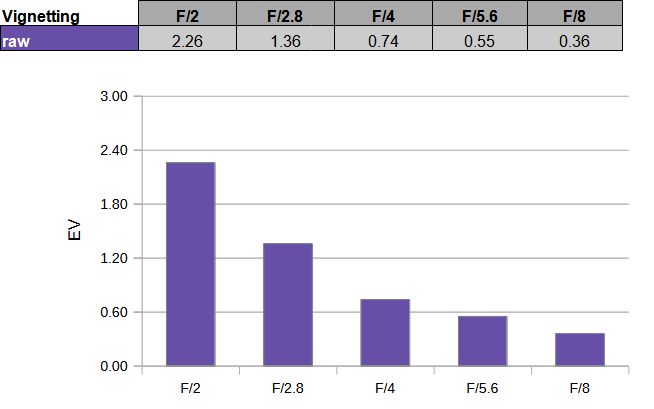
MTF (resolution) at 42 megapixels
The Viltrox AF 85mm f/2 EVO produced superb resolution data in our lab. The broader center quality is already outstanding at f/2. The outer image field isn’t quite as impressive but still manages a very good quality at this setting. Stopping down has a minimal effect on the center, but the border/corner quality does gradually improve until reaching an excellent peak at f/4. Diffraction is the limiting factor beyond. However, the results are still very usable at f/11.
The centering quality of the tested sample was good. The field curvature is flat.
Please note that the MTF results are not directly comparable across the different systems!
Below is a simplified summary of the formal findings. The chart shows line widths per picture height (LW/PH) which can be taken as a measure of sharpness. If you are keen to know more about the MTF50 figures, you may check out the corresponding Imatest Explanations.
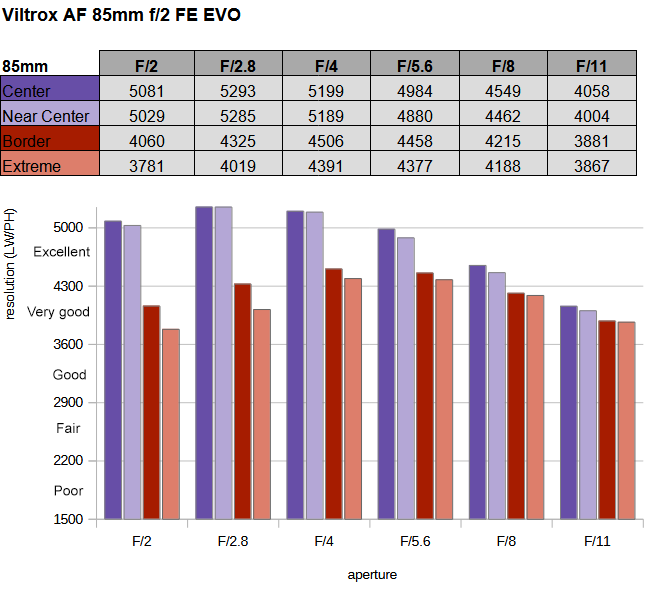
Chromatic Aberrations (CAs)
Lateral CAs are negligible at all aperture settings even without corrective measures.

Bokeh
A fast medium tele lens isn’t just about sharpness but also about the out-of-focus rendering, aka the bokeh – so let’s take a look.
The Viltrox lens doesn’t use any aspherical elements, so it’s not surprising that out-of-focus highlights are very clean. There’s just a hint of outlining at the disc edges, which increases slightly when stopping down.
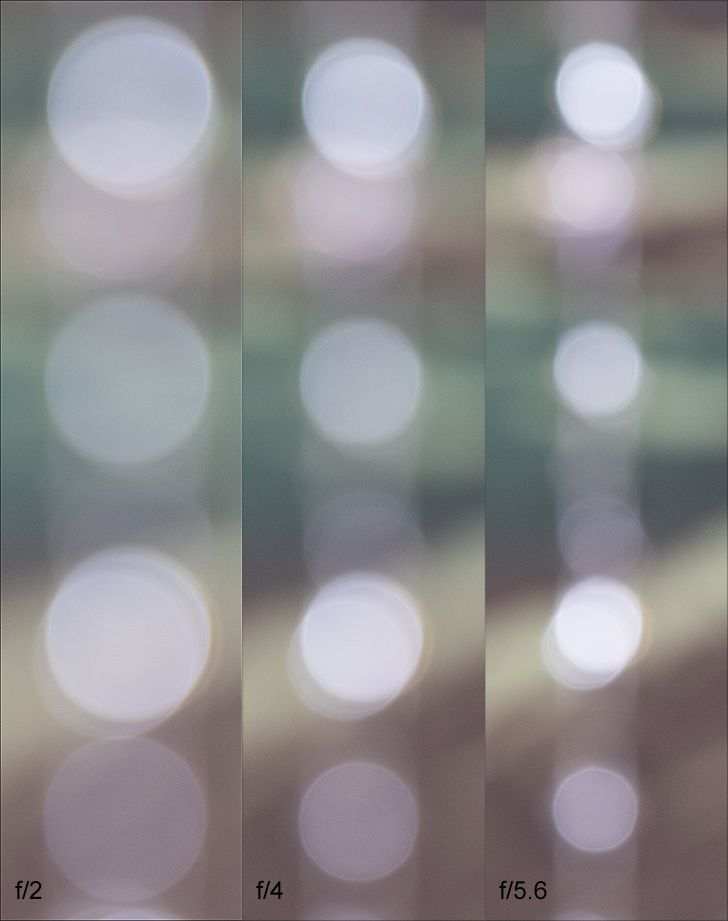
The above applies to the broader center. However, the highlights deteriorate to “cat eyes” the more they are positioned towards the borders/corners – this is a mechanical effect related to the size of the front opening of a lens. This is, as usual, most obvious at maximum aperture. Stopping down to f/2.8 restores the zone with circular highlights substantially, and they are also restored in the corners by f/4.
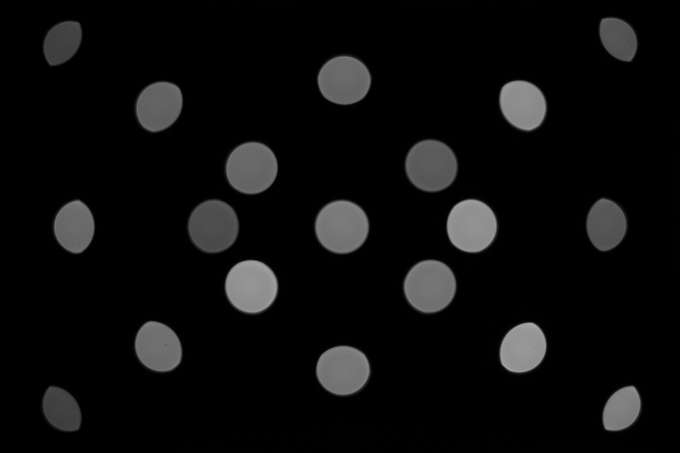
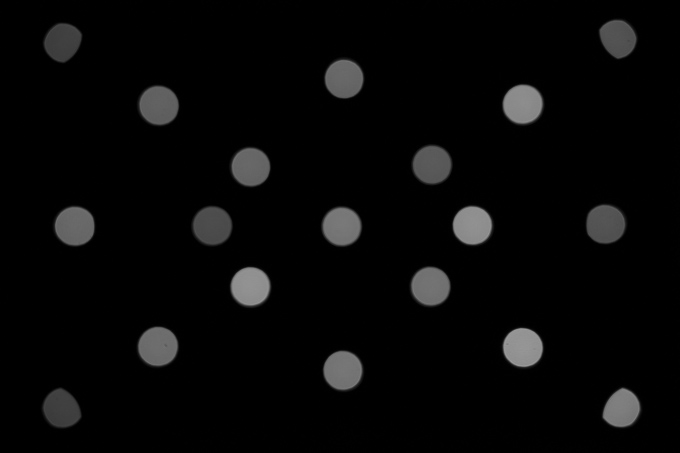
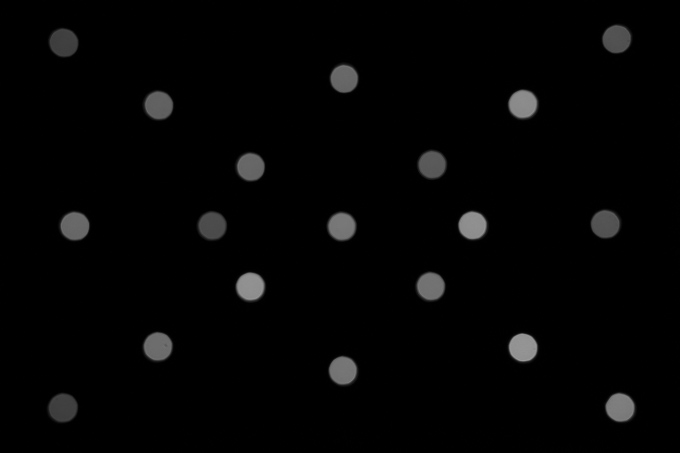
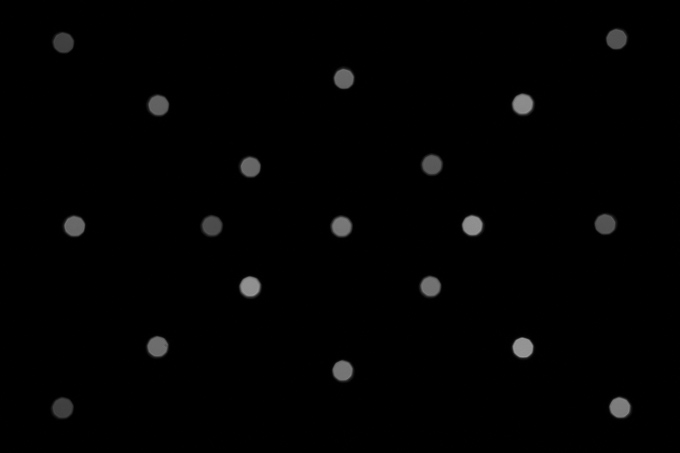
The blur in the focus transition zone is quite smooth in the image background (shown to the left below) and only slightly “shadowy” in the less important foreground (to the right).
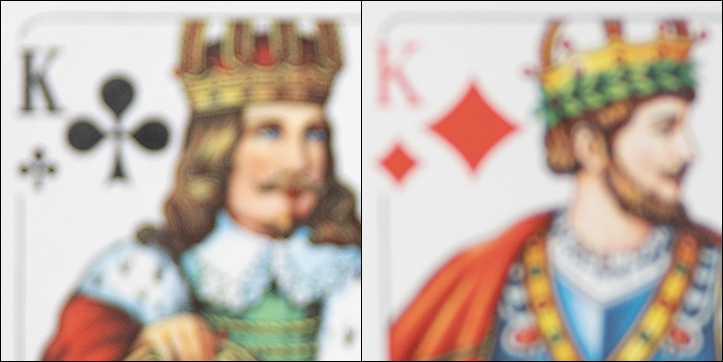
Bokeh Fringing / LoCA
LoCAs, or bokeh fringing, is a color fringing effect on the Z-axis. It shows up with a purplish tint in front of the focus point and a greenish tint behind – and it’s nearly impossible to fully correct in post.
As you can see below, the Viltrox lens shows some color fringing at f/2 with a bit of a greenish tint beyond the focus point. There’s barely any tint in front of the focus point, though. Stopping down to f/2.8 reduces the fringing, and it’s mostly gone from f/4.
You may also notice that the focus point shifts very slightly to the rear when stopping down. However, this has no practical relevance.
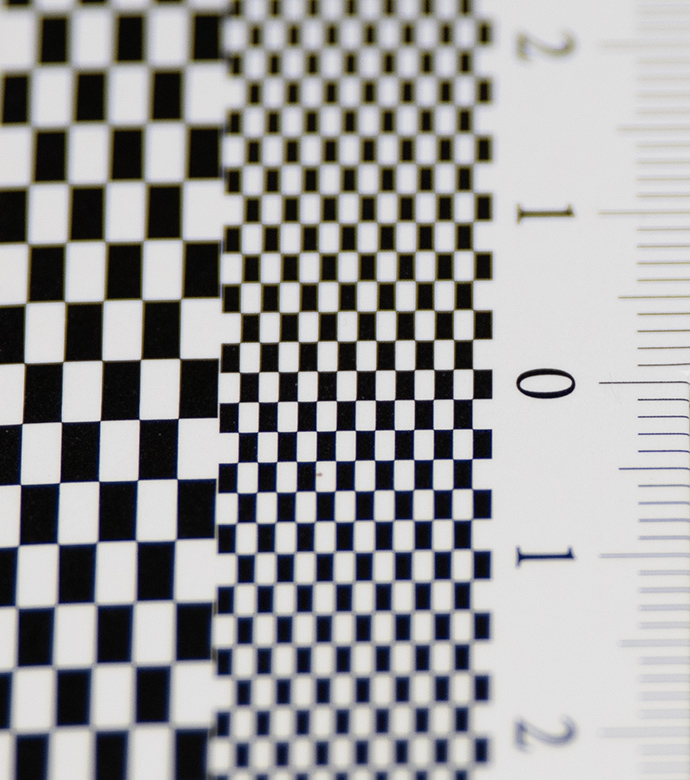
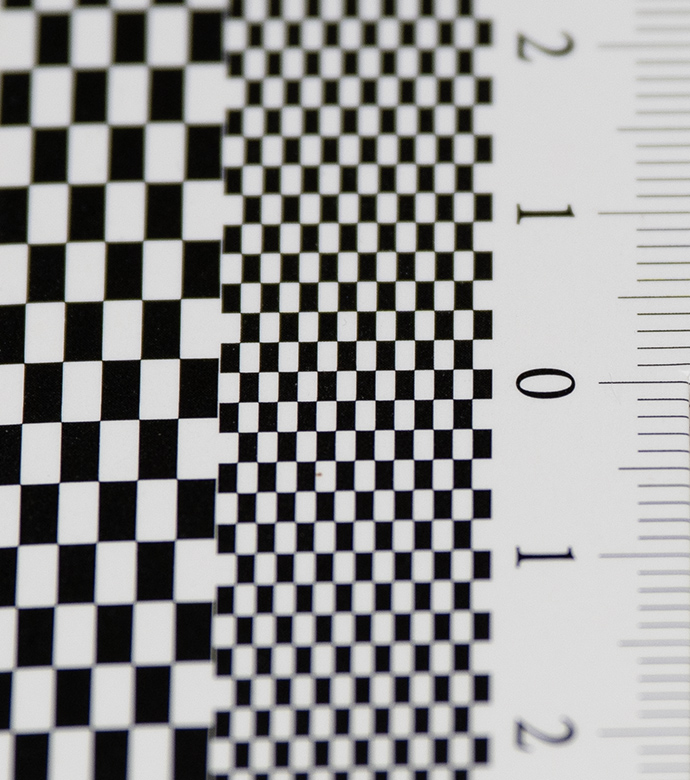
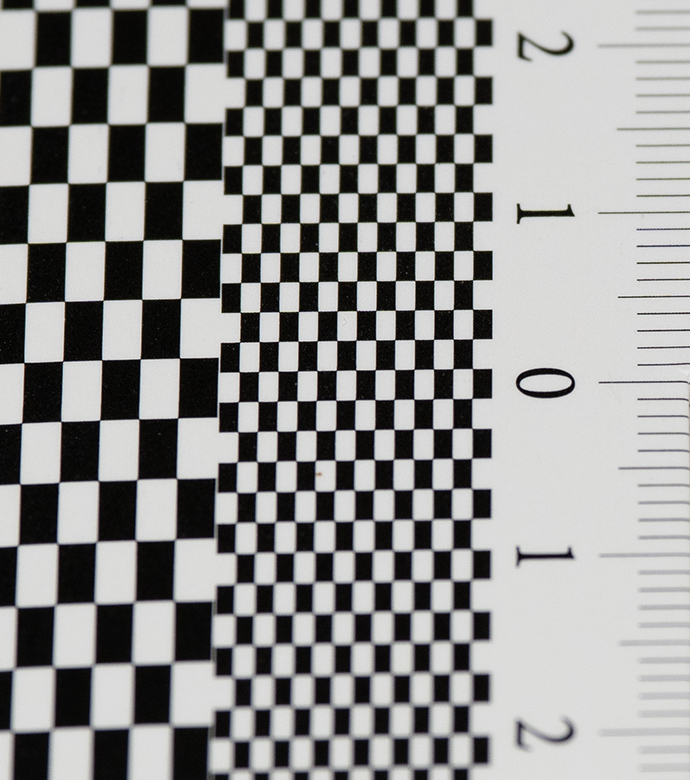
Competition
As always, the competition is plentiful in Sony E-mount. Sony’s own FE 85mm f/1.8 is the prime competitor, of course. It is sharp as a tack as well and is marginally faster both in terms of aperture and AF speed. However, it’s also more than twice the price tag. Another contender is the new Samyang AF 85mm f/1.8 P FE. Price-wise, it sits between the Viltrox and Sony lenses. We haven’t tested the Samyang lens yet, but the performance should be pretty similar – most moderately fast 85mm lenses are great optically. On the more exotic side, there’s the 7Artisans 85mm f/1.8, Meike 85mm f/1.8, and Yongnuo 85mm f/1.8 S DF DSM. These are in a similar price league, but the Viltrox is, most likely, a better bet. Then there’s also the rather old Zeiss Batis 85mm f/1.8. It’s impressively sharp, as you can expect from a Zeiss lens. The bokeh is less convincing, though. And it’s a hell of a lot more expensive.
Sample Images
Just when we thought that Viltrox had finally covered all possible prime lenses from 14mm to 135mm, they are coming up with another one. However, we shouldn't complain because the Viltrox AF 85mm f/2 FE EVO is a nice one. It may not possess the glory of an 85mm f/1.4, but not all of us are keen on carrying a heavy brick in our lens bag. And the 85mm f/2 should be "fast enough" for most of us, and it's certainly compact enough not to be a burden, especially when traveling. Optically, it's almost excessively sharp while still maintaining a quite nice bokeh. On the downside, it doesn't offer correction profiles for vignetting and distortions. The slight image distortions shouldn't be a big concern anyway, but the vignetting may need some correction in post. The amount of bokeh fringing is comparatively low.
The Viltrox AF 85mm f/2 FE EVO can also convince in terms of build quality. It's a tightly assembled metal construction with high-quality control rings. We'd wish for more weather sealing beyond the mount gasket, but we can't have it all at this price point, I reckon. The AF is decent without being super-fast.
Overall, Viltrox has another winner here - and that's at an amazingly low price - once again. The established gang should be quite concerned about the progress that Viltrox has made lately.
The Good
- Exceedingly sharp center quality
- Very compact & lightweight, yet high quality construction
The Bad
- No built-in correction profile
- The AF is not for sports
-
Optical Quality
-
Build Quality
-
Price / Performance


